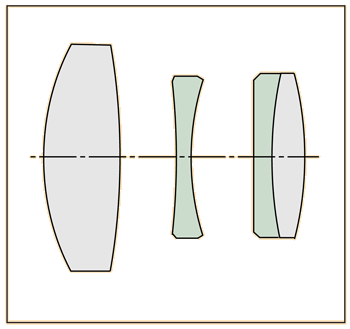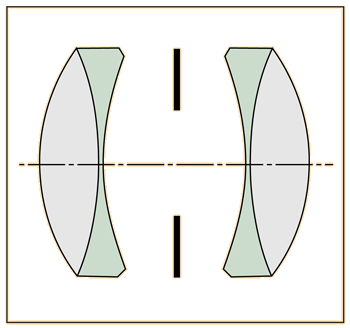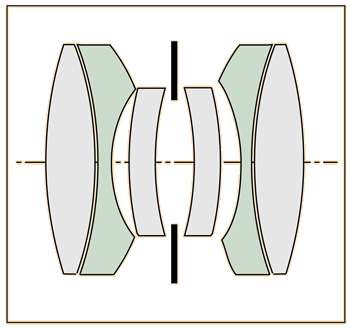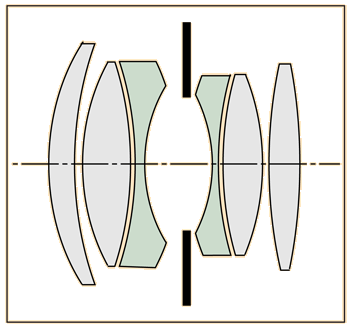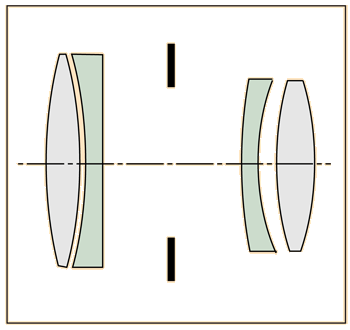Taylor-Cooke Triplet
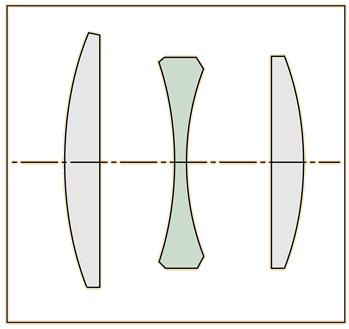 |
| ||||||||||||||
The Taylor-Cooke triplet was designed in 1893 by Harold Dennis Taylor of the T. Cooke &Sons Optical Company in the UK. It was somewhat revolutionary for photography since previous camera lenses had to severely limit the light gathering power with stops in order to limit aberrations . This required long exposures, up to 40 minutes, for high quality photography. The insertion of the negative lens made of flint glass between the two positive lenses of crown glass greatly reduced aberrations and permitted the use of larger apertures and reduced exposure times. (Meyer-Arendt)
Lens concepts
"Reference
Meyer-Arendt
Ch 9
| HyperPhysics***** Light and Vision | R Nave |


